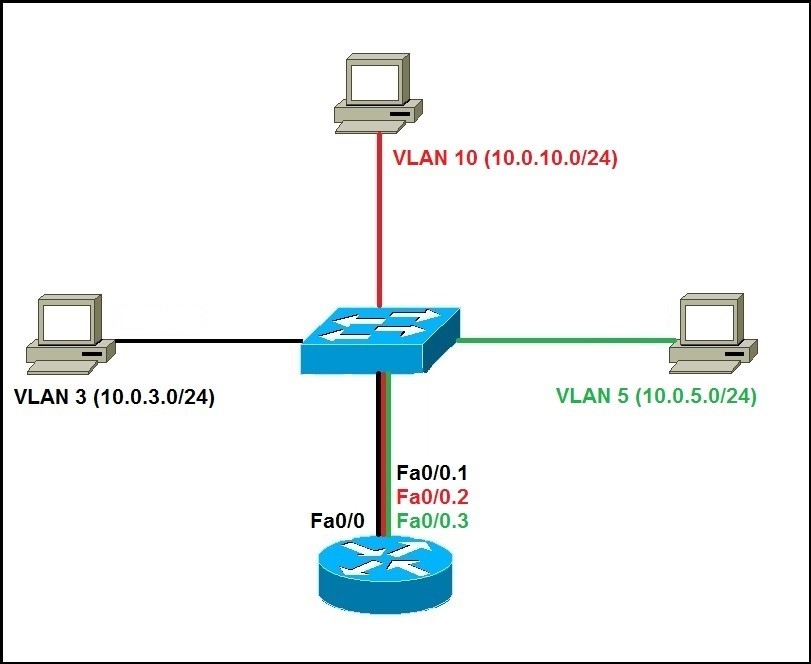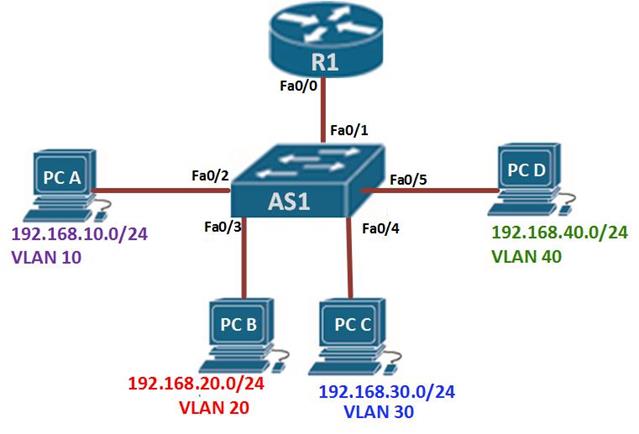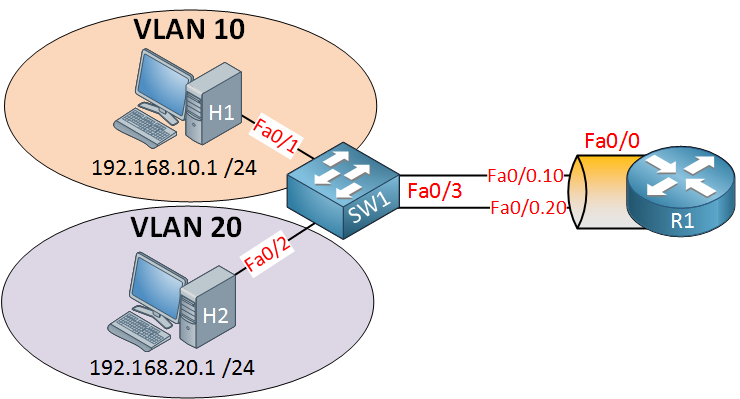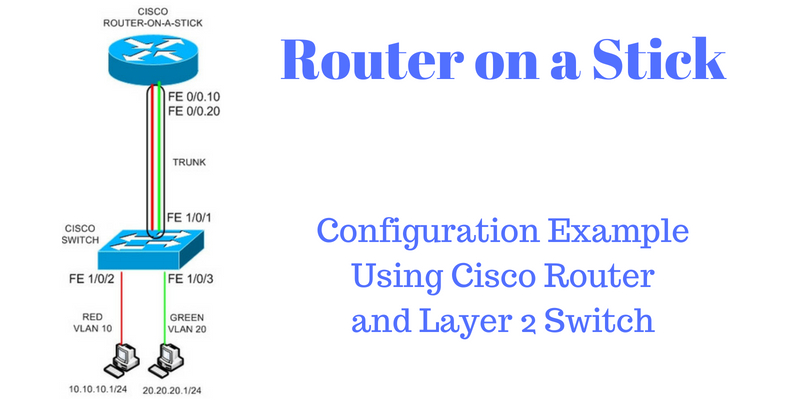

Switch1(config-if-range)# channel-group 5 mode desirable It is also possible to configure PAgP or LCAP at this time by specifying a mode, as listed in the table above.

Assign the port to a channel group, which is an integer between 1 and 6.Switch1(config-if-range)# switchport access vlan 10 Switch1(config-if-range)# switchport mode access


Notice the two subinterfaces and both status show as up/up.An EtherChannel consists of individual Gigabit Ethernet or 10-Gigabit Ethernet links bundled into a single logical link as shown in Figure 1.įigure 1: Typical EtherChannel Configuration *what that line means: dot1q is the trunking protocol, and 10 is the VLAN ID. Now we can configure the sub-interfaces on the router. By creating sub-interfaces on the router, the VLANs have a default gateway, enabling you to forward between VLANs.įirst we have to tell fa0/0 to not have use an IP address, and also to turn on the physical interface. In this step we can now start to complete our ROAS setup. So if more then 10 VLANS, best to you a 元 Switch. **Note you can add as many VLANS as you wish, but the more VLANS = More subinterfaces on your router which can burden your router. **Note that the link between SW1 and R1 is a trunk link. In this how-to I will be using the following devices: So I will not be covering it in this how-to. In this setup, the switch is configured with multiple VLANs and the router performs all routing between the different networks/VLANs. Router-on-a-stick is a term frequently used to describe a setup up that consists of a router and switch connected using one Ethernet link configured as an 802.1q trunk link. You need a router to be able to route between the two VLANS or you can use a Layer 3 switch. Posted in Cisco Routers - Configuring Cisco Routers. Like having a VLAN for your Servers and also one for your client Data. What that means is simply routing withing your network between VLANS. Please leave your feedback in the comments at the bottom.Ī ROAS is used within a small to mediam sized organization that needs to implement inter-VLAN routing.
CISCO ROUTER ON A STICK CONFIGURATION HOW TO
This how-to is designed for basic users, but can be used as a guide by senior admins that just forgot how to set it up or what it is. In this how-to I will describe what the term Router on a Stick means and also how to configure it.


 0 kommentar(er)
0 kommentar(er)
